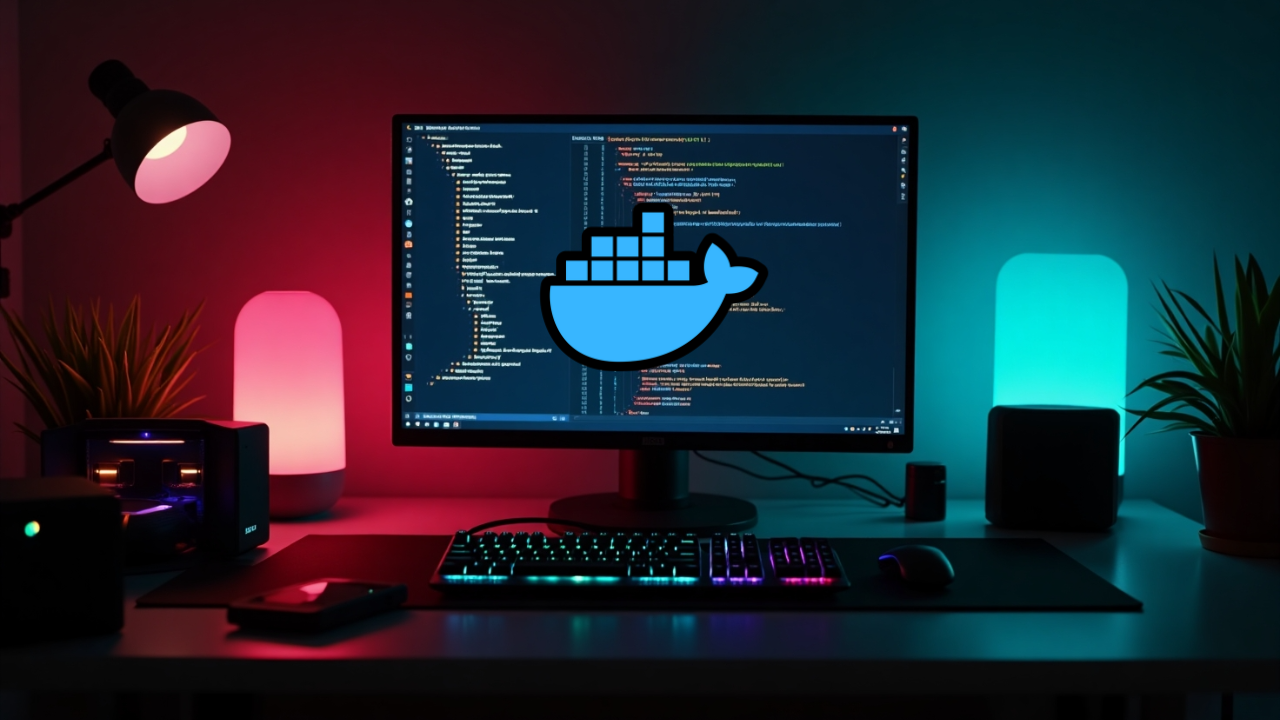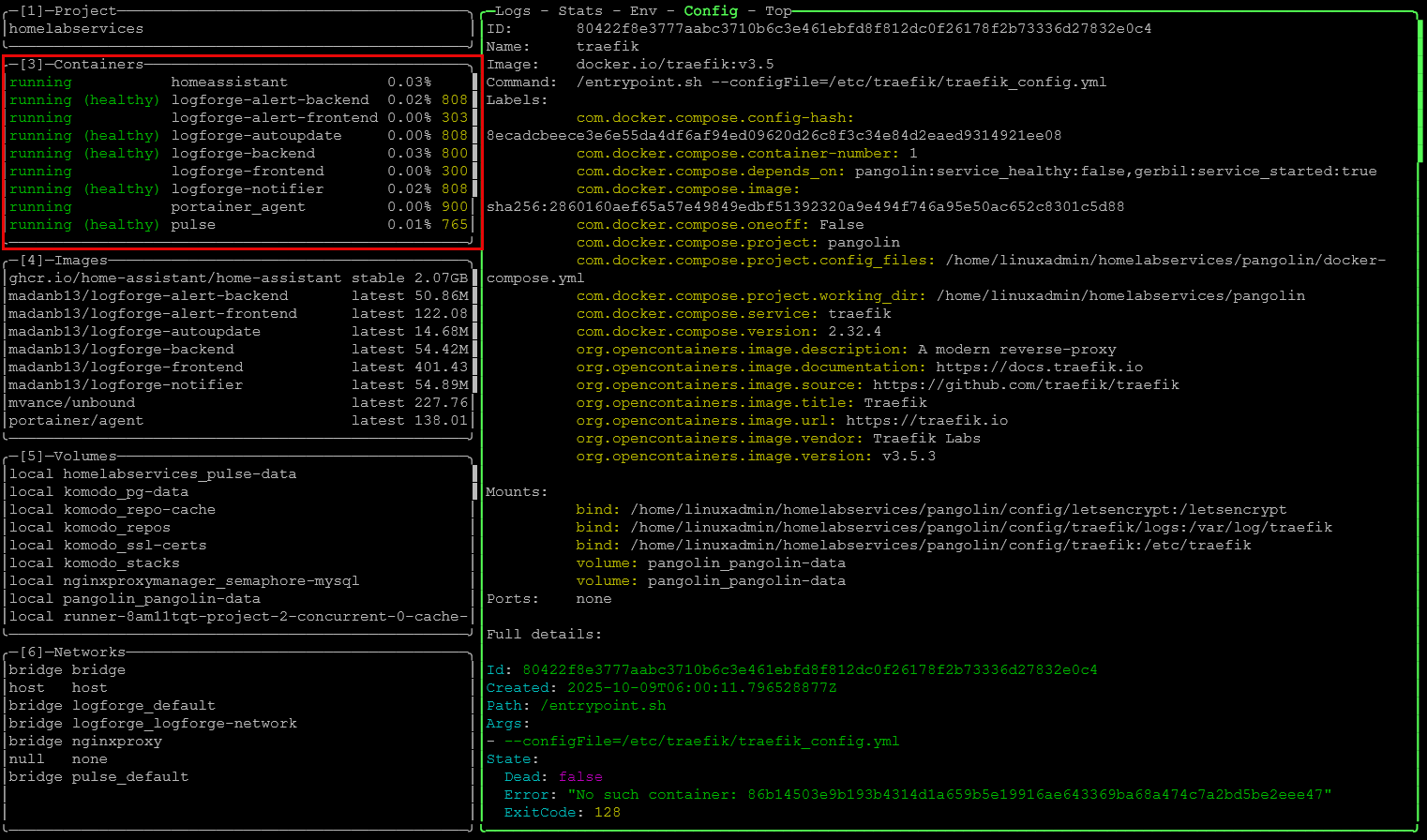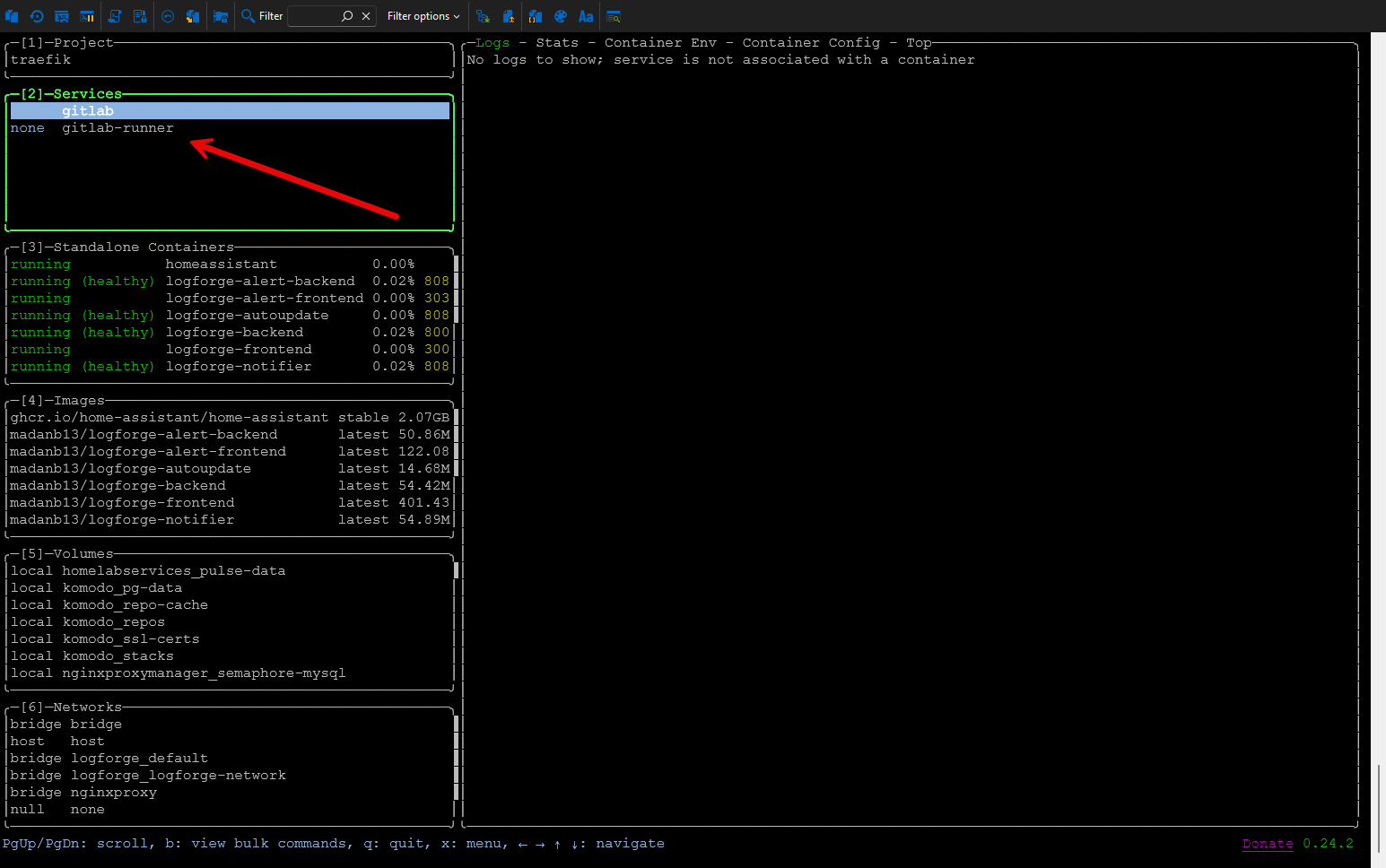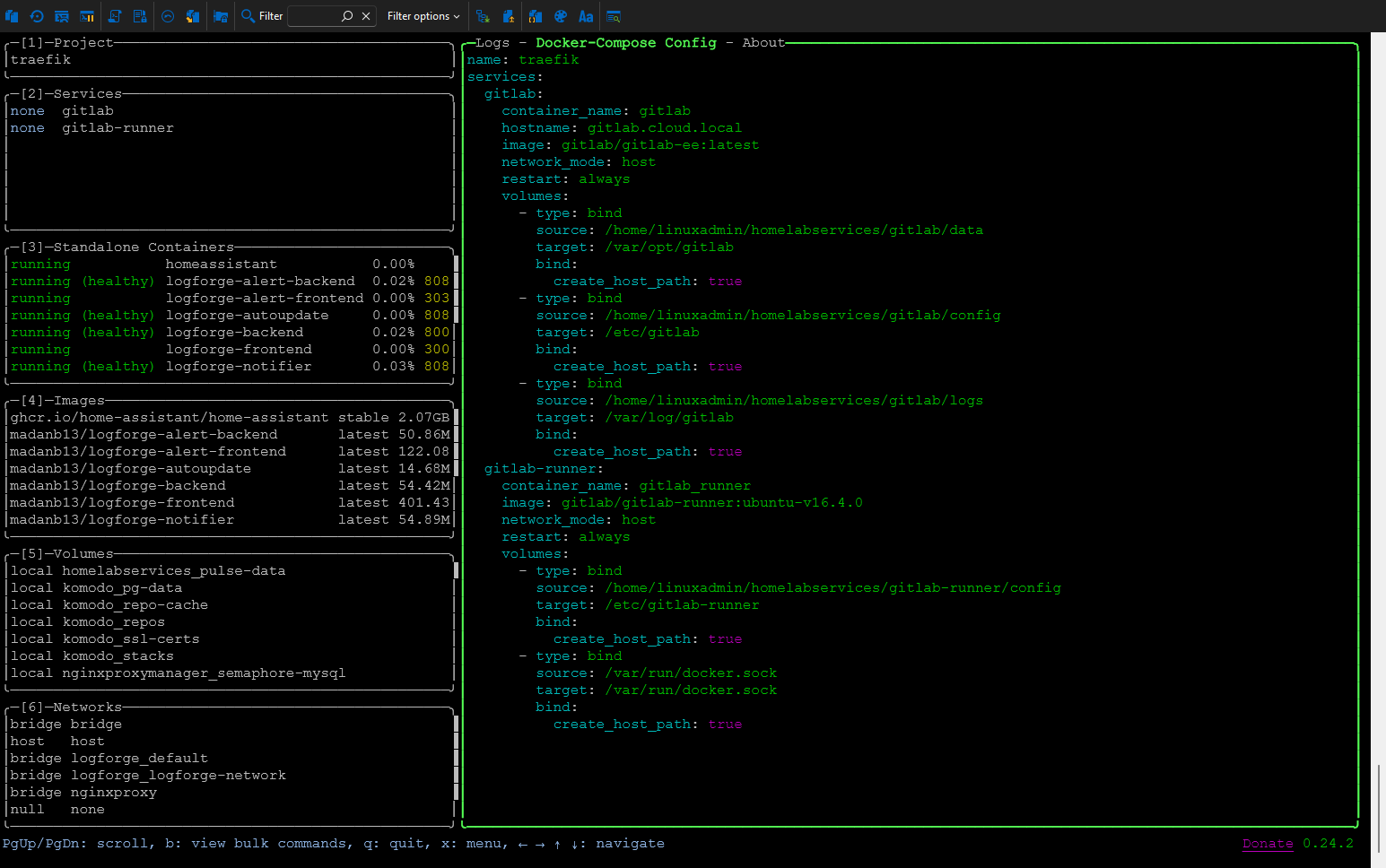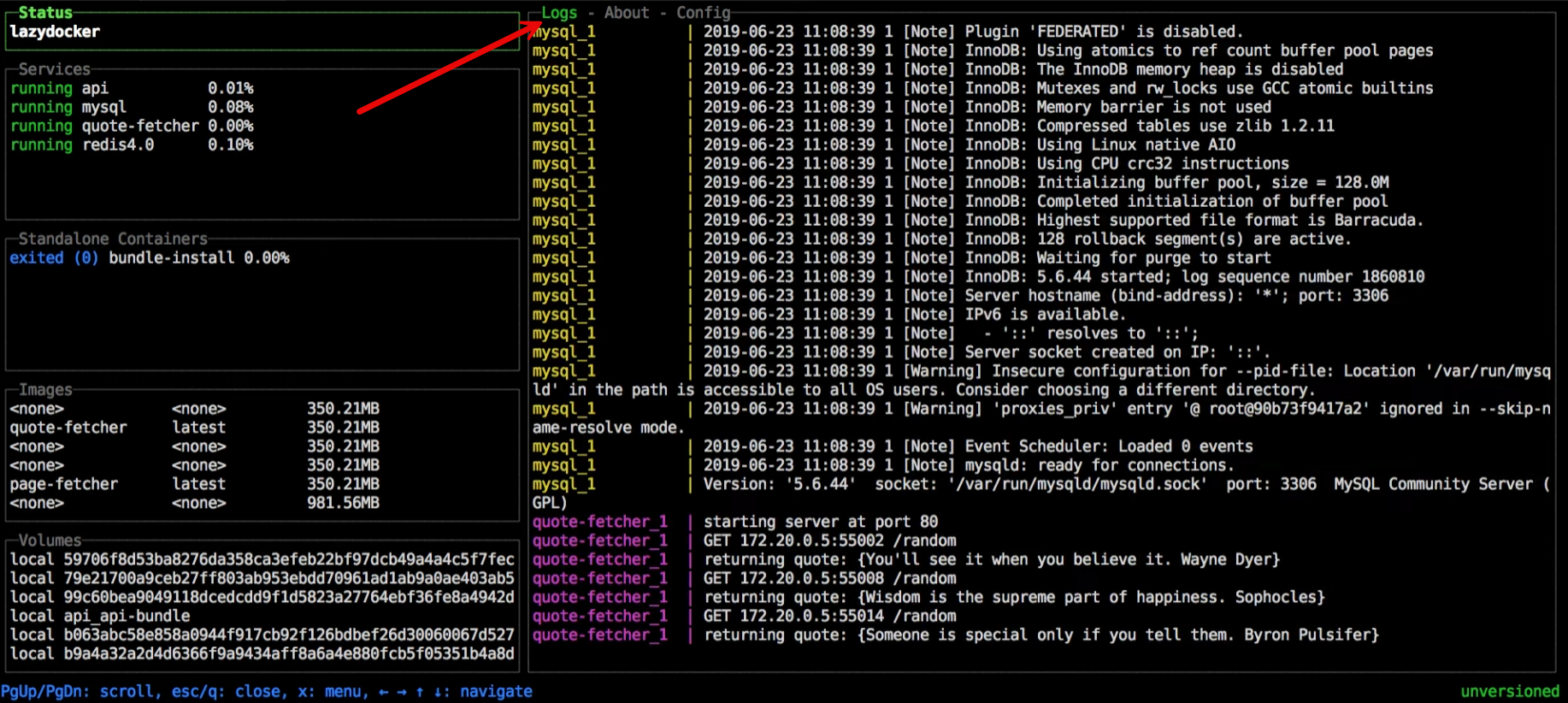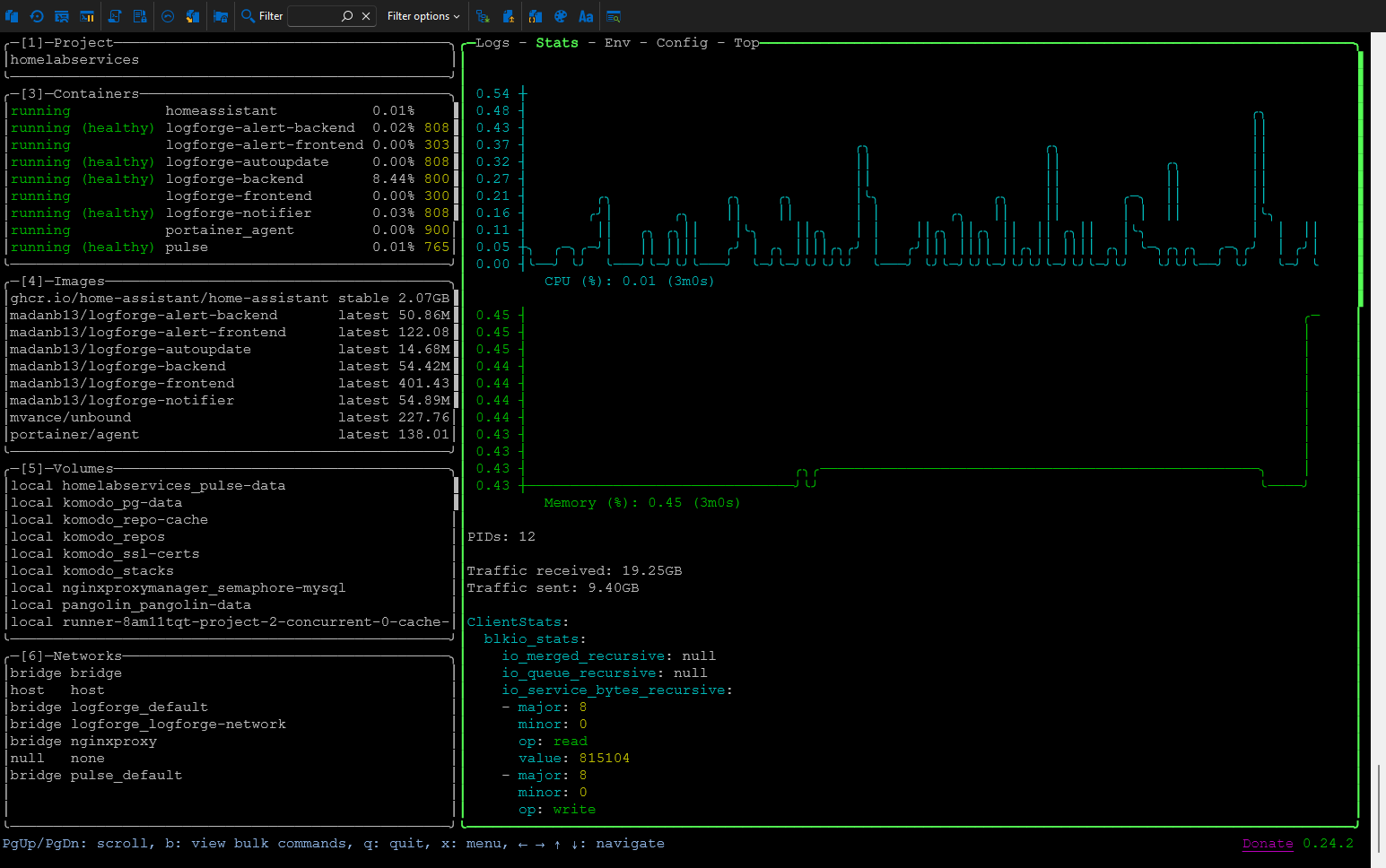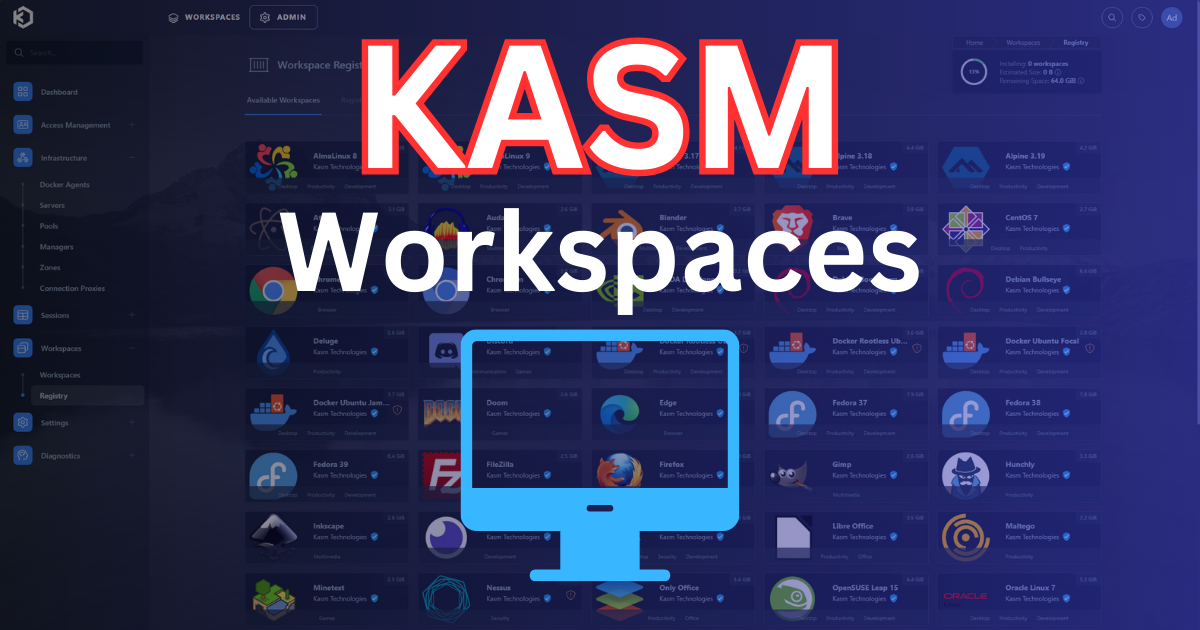When you start out in the home lab managing containers, this always starts out fairly simple when you have one or two containers. You might even introduce a reverse proxy and a database at some point. However, after you add more and more services and build out things like a media stack, monitoring platform, Git repo, and other apps, you can suddenly have dozens of containers. In addition, you will have dozens of networks, volumes, and log files to keep up with. The Docker CLI can do anything you need, but it is often difficult to manage this way as your environment grows. Lazy Docker helps solve this problem. Let’s see how Lazy Docker can help you in the home lab and what features it includes.
What is Lazy Docker?
Lazy Docker was created by Jesse Duffield, the same developer behind the LazyGit tool. It has a similar mindset of being fast and helpful while at the same time easy to navigate using just a keyboard. It is a terminal UI for Docker and Docker Compose. So, instead of you having to type multiple commands to view logs, check resources, inspect your containers, or have your containers restarted, Lazy Docker gives you this in a single screen.
If you have used something like htop or btop in the past, it has a very similar feel to those tools, but it is specific to Docker environments. You probably won’t completely replace your docker CLI with this tool, but I think it is a great companion app to go along with what you can do from the command line.
You can check out the official project repo here: jesseduffield/lazydocker.
Why home labbers really like Lazy Docker
Lazy Docker feels like the type of project that you would want to make use of in the home lab. In the home lab, most of us run a mix of containers that give you essential services. These can include some or all of the following:
- Nginx Proxy Manager or Traefik as a reverse proxy
- Prometheus, Grafana, Netdata, or Dozzle to monitor the environment
- Automation tools and now AI tools
- Plex, Jellyfin, or Emby for media
- Gitea or GitLab for self-hosting your own Git server
- Postgres or MariaDB for databases
- Tailscale or WireGuard for VPN
- Portainer or Komodo as GUI container manager tools
Each of these services may include multiple containers, docker compose files, volumes, networks, and many other resources related to the stacks. You CAN manage all of this with Docker CLI, but it can definitely become tedious. Having a more GUI-type tool for your Docker environment is way better when you need to monitor a large number of containers.
Note the following features of Lazy Docker and what it allows you to do.
| What Lazy Docker Helps You Do | Description |
|---|---|
| See running containers | Quickly view all active containers in one dashboard |
| Monitor container resource usage | Check CPU, memory, disk, and network usage at a glance |
| Tail logs instantly | View real time logs for any container without using CLI commands |
| Start, stop, or restart containers | Manage container lifecycle actions with simple key commands |
| See Docker stacks | See which containers are in the same stacks and troubleshoot from the perspective of the stack |
| See issues visually | See errors or performance problems through an interactive UI |
| See real time statistics | Track performance metrics in real-time from within your terminal |
| Troubleshoot faster | Combine logs, stats, and config views to troubleshoot everything in one place |
If you regularly SSH into your Docker container hosts in the home lab and run Docker CLI commands to find this kind of information, this tool can make this much easier.
Installing Lazy Docker
Lazy Docker is very easy to install. There are several methods, but the simplest is the official install script:
curl https://raw.githubusercontent.com/jesseduffield/lazydocker/master/scripts/install_update_linux.sh | bashThen, if you don’t want to update your PATH, you can do the following to move it to the /usr/local/bin directory:
sudo mv /home/linuxadmin/.local/bin/lazydocker /usr/local/bin/
sudo chmod +x /usr/local/bin/lazydocker
To update Lazy Docker, run the same command again.
If you want to use Homebrew, you can install it with:
brew install lazydockerOr if you have Go installed:
go install github.com/jesseduffield/lazydocker@latestOnce installed, launch it by running:
lazydockerYou are immediately taken into the interactive dashboard.
What You See When Lazy Docker Opens
Lazy Docker displays several panels that work together to give you a full view of your system.
Containers Panel
The containers panel looks like the below. As you can see, it displays a really nice view of your running containers. The thing i like as well is that it is context aware. So, if you launch this in a global folder, it will show you all your containers. But if you launch it inside a single Docker compose folder, it will show you the information in the context of that folder.
This is the main panel that shows all containers running on your system. You can see the following information:
- Container name
- CPU usage – this is a real-time ticker that shows you the CPU usage
- Memory usage
- Health status – green for healthy, red if something is wrong
- Restart count
- Container uptime
When you highlight a container, you can quickly open:
- The logs panel
- The stats panel
- The environment variable view
- The configuration view
- Top – to see the top processes
As a side note. To switch between the menu items in the (Logs Stats Env Config Top) screen, you need to use the left and right brackets button on your keyboard by default.
Services Panel
If you use Docker Compose and you launch LazyDocker from the directory with your docker compose file, it will show services rather than just the containers. This is useful for understanding which containers belong to each service.
You can even view the docker compose from the Lazy Docker tool. This is great as you don’t have to leave the tool to look at your compose code.
Stacks Panel
Lazy Docker automatically detects all Docker Compose files and presents them as stacks. You can interact with an entire stack or drill down into specific services. This is helpful for:
- Restarting a stack
- Viewing stack level logs
- Rebuilding services after modifying YAML files
It makes Compose based deployments much more intuitive.
Logs Panel
One of the most useful features in Lazydocker is the log viewer. Instead of running docker logs over and over, Lazy Docker tails logs in real time. You can scroll through logs and jump to the bottom. Then you can switch between containers as you need.
Stats Panel
Lazy Docker shows live metrics for your containers running on your Docker host. These states include things like:
- CPU load
- Memory usage
- Network throughput
- Disk I/O
Below, you can see the Stats view of the specific container you have focused in on.
This is really useful if you are troubleshooting performance or your host is maxed out on system resources and you need to understand why.
Customizing Lazy Docker
One of the really cool things about LazyDocker is that it includes optional customization for the tool. You can modify key bindings, color themes, and command behavior.
Create a configuration directory:
mkdir -p ~/.config/lazydockerThen create a config file:
~/.config/lazydocker/config.ymlYou can also create this file easily while you are inside Lazy Docker by being in the project pane and typing “x” on the keyboard to launch the global menu. You will see this:
Inside, you can configure custom colors, Docker Compose paths, or even swap Docker out for Podman. This allows you the opportunity to tweak and tune it exactly for your specific environment and needs.
Lazy Docker With Podman
Speaking of Podman, Lazy Docker now supports Podman, which is useful for users of Red Hat based systems or rootless containers. To tell Lazy Docker to use Podman, you need to update your config file for Lazy Docker with:
commandTemplates:
docker: podman
dockerCompose: podman-composeAs a note, Lazy Docker works in nearly the same way with Podman as it does with Docker.
Lazy Docker vs Docker CLI vs Portainer vs Komodo
I know many out there might be wondering. Should I use this vs Docker CLI vs something like Portainer? Well, I don’t think Lazy Docker completely replaces the Docker CLI, especially for scripting and other things having to do with automation. Also, GUI tools like Portainer and Komodo are great tools.
Keep in mind that Portainer is not free once you get past 3 container hosts. You can do a home lab/student license with them, but this price has increased this year compared to last year. Komodo keeps getting better as well. It I would say is probably the most appealing option out of all the solutions that are free and open-source to use for managing your containerized environments.
Lazy Docker I think is in a type of middle ground here. It gives you an interactive view in the terminal that is much faster than having to memorize all the relevant Docker CLI commands, and probably easier for most to understand. It isn’t a full management solution like Portainer or Komodo and it doesn’t claim to be that.
Many users, including myself, run all three tools side by side. Lazy Docker often is the quick and easy daily driver for quick checks, log viewing, and restarts.
Wrapping up
I really think Lazy Docker is one of the coolest little tools that you can use for managing your Docker environment in your home lab. It is really efficient and works to give you a quick understanding of what is going on with your container environment. If you are running Docker and have more than around 5 containers, Lazy Docker is almost a sure thing to improve your workflow in managing things. It also helps with quick and easy troubleshooting, including viewing logs, restarting containers, reviewing docker compose, etc. Let me know in the comments. Have you tried out Lazy Docker?

